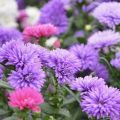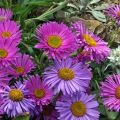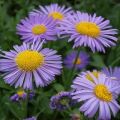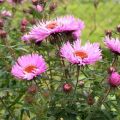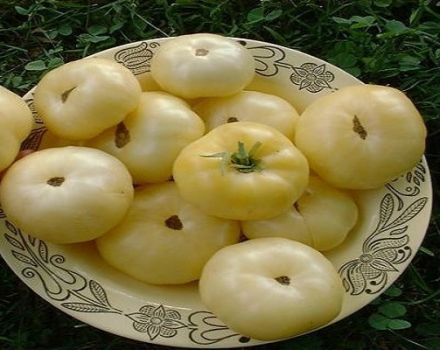Description of varieties and varieties of shrub asters, cultivation and care
Many owners of summer cottages and private houses are engaged in growing flowers. At the same time, flowers such as shrub aster are often planted. However, before planting a plant, you need to familiarize yourself in detail with its features and growing rules.
Description and characteristics of shrub aster
Shrub aster is a common perennial plant that is often grown to decorate flower beds. Currently, there are several hundred varieties of such flowers.
The features include their root system with a branching strong root, which is reliably protected from temperature extremes and pests. During cultivation, inflorescences 3-4 centimeters long appear on the bushes. Most often, their tubular part has a yellowish tint. In this case, the reed part can be:
- red;
- blue;
- lilac;
- white;
- pinkish.
The most common varieties and types
Before you start planting shrub flowers, you need to familiarize yourself with the most beautiful varieties of asters.
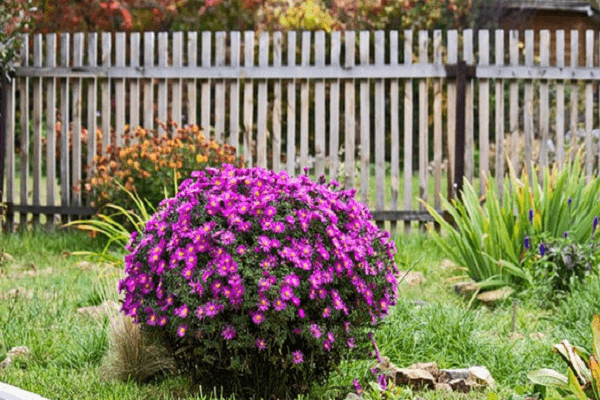
Alice Haslam
Among the popular varieties of shrub asters, Alice Haslam is made. The main difference between a flower and other varieties is considered to be its diminutiveness and compactness. The bush grows up to twenty centimeters, after which it stops growing.
Blau Lagoon
A plant with very bright inflorescences, painted in purple with a lilac tint. Blau Lagoon is considered an autumn flower, as flowering begins in early September and lasts until the first night frost.
Lady in Blue
The most popular winter-hardy shrub variety is Lady in Blue. Bushes in the second half of summer are covered with bright blue inflorescences that bloom until October.
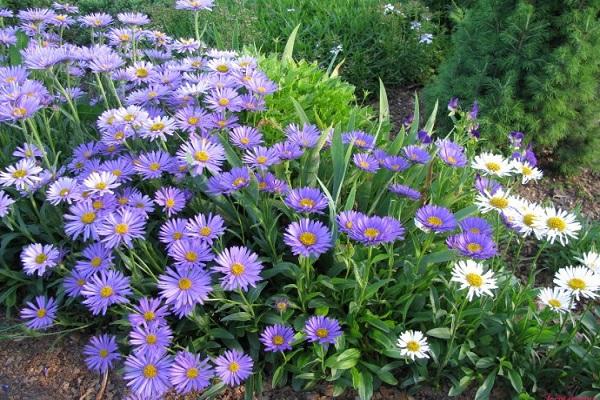
Schneeckissen
A low-growing variety with compact bushes thirty centimeters high. Abundant flowering begins in late September or early October and lasts 25-30 days. The inflorescences have a yellowish middle and snow-white-white petals.
Jenny
Jenny is a popular variety of asters. Many summer residents decorate their flower beds with this particular variety. During the flowering period, inflorescences with petals, painted in bright pink, appear on Jenny's bushes.
Anneke
The most unpretentious shrub variety, which everyone can cope with growing.Anneke blooms in August and finishes in 35-40 days. The flowers are crimson with a light red tint.
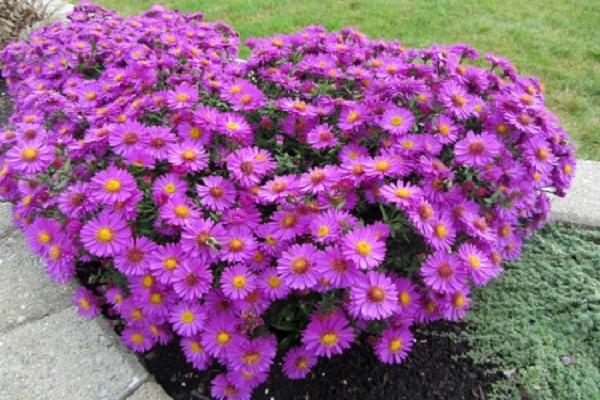
Starlight
The characteristic features of Starlight include the branching of its bushes, as well as a long flowering, which lasts 45-55 days. The shrub is unpretentious in care and therefore, when growing it, it is not necessary to often moisten or feed the soil.
Flower reproduction methods
Bushy aster reproduces in various ways. There are four main methods of flower reproduction, the features of which must be dealt with in advance.

Seeds
Many breeders and gardeners use the seed method of propagating flowers. At the same time, experts advise planting ripe seeds immediately after harvesting so that the grown asters are healthier and not subject to disease.
By division
Another common method for propagating shrub flowers is division. When using this method, you will have to independently separate the cutting from the mature bush. It is recommended to do this in the fall or spring, when the temperature does not drop below zero degrees.
Layers
The oldest method of propagation for many plants is the use of layering. The essence of this method is that before dividing the bushes on the stems stimulate the formation of young roots. Then the layers are separated from the mother plant and planted in the soil.
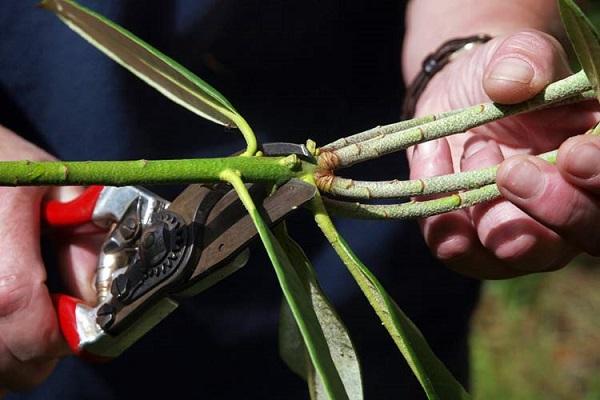
Cuttings
To propagate flowers by cuttings, you will have to cut off shoots 15-17 centimeters long from young stems. Then they are transplanted into soil and filled with warm water. The procedure is carried out in the first half of summer or spring.
Growing rules
Perennial shrub aster must be planted correctly and therefore you must familiarize yourself with the nuances of its planting in advance.
What time to grow?
First, you need to decide on the most suitable period for growing asters. Experienced gardeners advise doing this at the end of March or in the first half of April, when there is no frost at night. If it got warmer outside earlier, then planting can be done in early March.
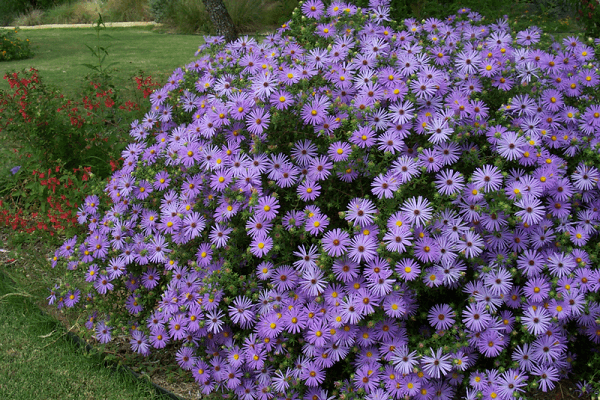
Choosing a place on the site
Before disembarking, be sure to choose the most suitable place for planting asters. It is recommended to plant them in a semi-shaded area, since burns may remain on the leaves and inflorescences due to direct sunlight. Also, for planting, select places with clean soil without weeds.
How to sow seeds correctly?
Before planting, all seeds are pre-treated with fungicidal agents and stimulants to accelerate the growth of seedlings. Then soil is poured into the growing container, after which holes are made about 15 centimeters deep. Seeds are planted in each hole, covered with earth and watered.
How are seedlings grown?
To get strong seedlings, you need to familiarize yourself with the basic nuances of growing it. Experienced gardeners advise keeping all containers with seedlings in cool rooms where the temperature does not rise above fifteen degrees.
The seedlings must develop evenly. Therefore, in order for the stems to develop equally on all sides, it is necessary to periodically turn them towards the sunny side of the room.
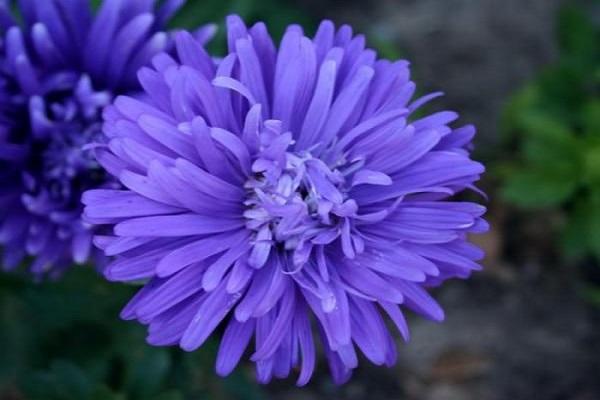
Landing technology
When the seedlings grow to 8-10 centimeters, they are transplanted into open ground. For this, shallow holes are made in the flower bed at a distance of 20-30 centimeters. Then asters are carefully taken out of the pots along with the soil and seated in holes.
How to care for a plant?
So that the bushes do not die and please the owners of the summer cottage with their beauty, they will have to be properly looked after. Therefore, it is recommended that you familiarize yourself with the basic nuances of caring for planted asters.
Watering
Aster shrub varieties are known to cope with dry weather very well. However, this does not mean that you can not moisten the soil in the flower bed. In order for the plant to grow normally, you will have to water all the flowers once a week. If the summer is rainy, watering can be reduced to 2-3 times a month.
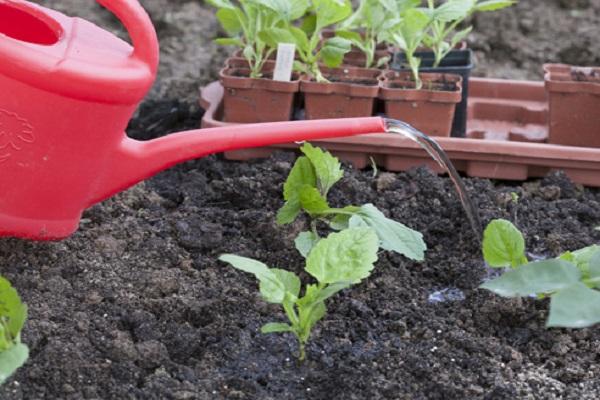
Temperature
People who grow asters rarely pay attention to temperature. However, if the temperature regime is observed, the planted plant will develop many times better. It is recommended that when growing flowers, temperature indicators do not exceed 30 degrees.
Fertilizers
During the entire growing season, the plant is fertilized at least three times. Regular feeding of asters has a positive effect on the growth of bushes and makes the flowering more lush. Gardeners are advised to fertilize the bushes with mineral dressings with the addition of organic matter.
How to properly preserve asters in winter
Despite their winter hardiness, asters still need to be prepared for winter. To do this, in the fall, flower beds are covered with a dense layer of fallen leaves with tree branches. The shelter is removed in the last days of March.
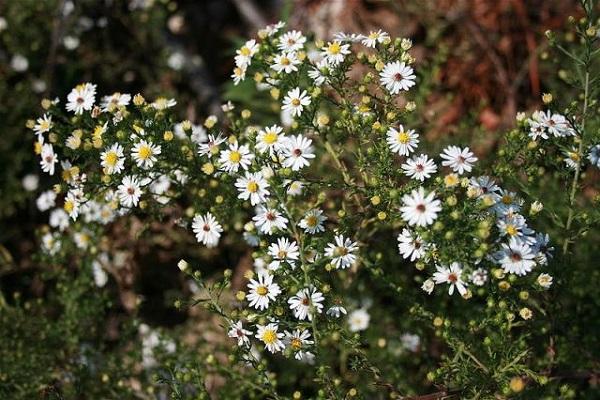
Common diseases and pests
The most common disease that affects asters is fusarium. It is impossible to cure this disease, and therefore all infected flowers must be dug up and burned so that the disease does not spread through the flower bed.
Also, pests that periodically attack asters can lead to the death of plants. Most often, plants affect:
- scoops;
- aphid;
- bed bugs;
- plowed slugs;
- pennies;
- ticks.
To protect the flowers from pests, it is necessary to periodically feed the soil with lime, and also dig up the area after flowering.

Conclusion
Many summer residents who want to decorate their plot with flowers are engaged in the cultivation of shrub asters. Before planting such plants, you need to familiarize yourself with the common varieties and the rules for their breeding.


